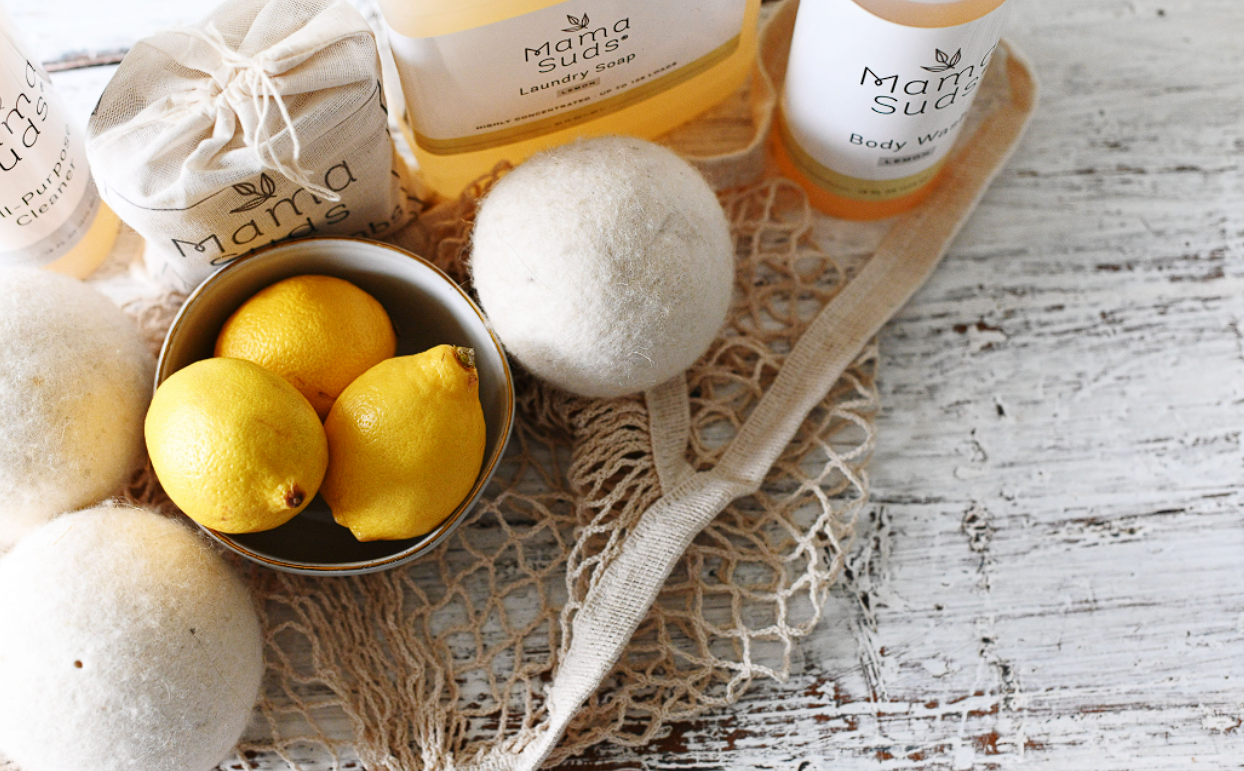
The CleanSuds Blog
Where education and truthful facts are easy to come by.
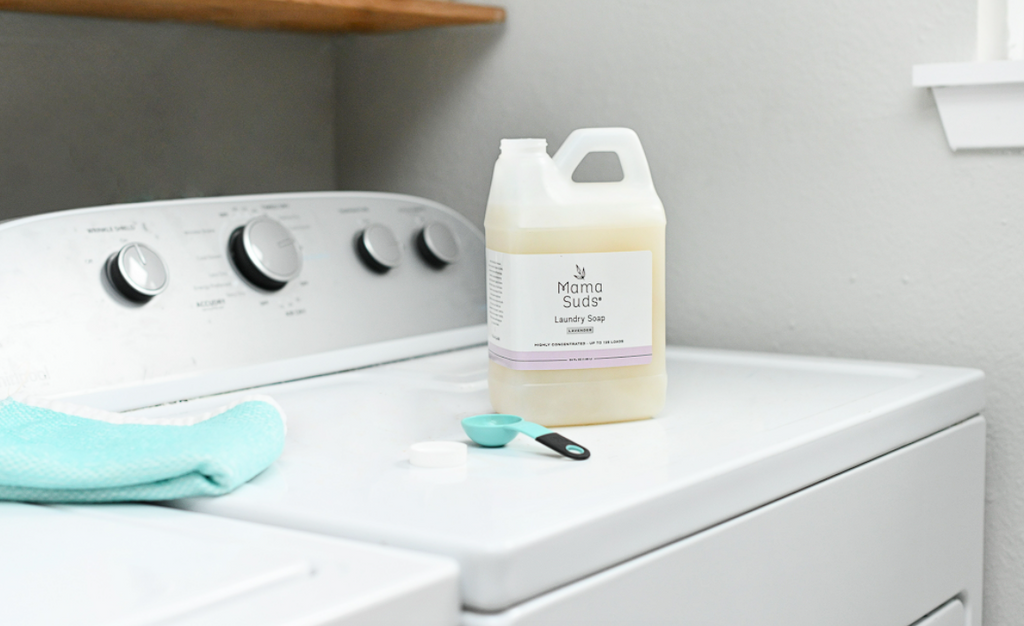
10 Eye-Opening Truths About Non-Toxic Laundry Detergent
(And How to Make the Switch Without Sacrificing Clean Clothes!)
1. The Problem: Your Laundry Detergent is a Cocktail of Hidden Toxins
Most conventional laundry detergents contain synthetic fragrances, optical brighteners, and surfactants that leave behind a toxic residue on clothes. These chemicals can irritate skin, disrupt hormones, and even affect respiratory health.
Unexpected Solution:
Switch to a truly non-toxic, residue-free detergent made with simple, safe ingredients like castile soap and mineral-based boosters. The key? Ditching unnecessary additives that do more harm than good.
Benefit:
Your clothes will be clean without exposing your skin (or your kids’) to harmful chemicals, reducing allergic reactions and long-term health risks.
💡 Three Quick Tips to Get Started:
- Check the ingredient list for SLS, phthalates, and optical brighteners—if they’re there, ditch it!
- Try washing a load with only hot water—if suds appear, that’s detergent residue left behind.
- Swap to a concentrated, plant-based detergent like MamaSuds to clean effectively without toxins.
2. The Problem: "Free & Clear" Isn't Actually Free of Toxins
Many detergents labeled “free & clear” still contain synthetic preservatives and hidden irritants like formaldehyde-releasing agents.
Unexpected Solution:
Look for brands that fully disclose ingredients instead of hiding behind vague labels like “proprietary blend.” A good rule of thumb? If you can’t pronounce it, don’t use it!
Benefit:
You'll avoid hidden irritants, reducing skin flare-ups and allergic reactions for your entire family.
💡 Three Quick Tips to Get Started:
- Research your detergent on EWG’s Skin Deep Database to see how safe it really is.
- Switch to a detergent made with only mineral and plant-based ingredients (like castile soap).
- Test your current detergent—wash a shirt with just hot water and smell it. If it still has fragrance, it's leaving behind residue.
3. The Problem: Fabric Softeners Are Just Chemical Coatings
Fabric softeners and dryer sheets leave a layer of artificial chemicals on clothes that mimic a “soft” feel but don’t actually improve fabric quality.
Unexpected Solution:
Use vinegar in the rinse cycle and wool dryer balls instead of toxic softeners—your clothes will be naturally soft and static-free.
Benefit:
Your laundry will smell fresh, feel soft, and be free from unnecessary chemical exposure.
💡 Three Quick Tips to Get Started:
- Add ½ cup of vinegar to your washer’s rinse cycle instead of fabric softener.
- Toss wool or up cycled dryer balls in with your clothes to reduce static and soften fabric naturally.
- Avoid synthetic “clean scents” by using essential oil-infused wool balls for a light, natural fragrance.
4. The Problem: Your "Fresh Laundry" Smell is Actually Synthetic Fragrance
The artificial scent in most detergents is made from a cocktail of undisclosed chemicals that can trigger allergies, asthma, and headaches.
Unexpected Solution:
Ditch fake fragrances and embrace true freshness by washing with unscented, residue-free detergent. If you love a scent, add a few drops of pure essential oil to wool dryer balls instead.
Benefit:
Your laundry will actually smell clean instead of masking odors with harmful chemicals.
💡 Three Quick Tips to Get Started:
- Choose unscented detergents to avoid hidden synthetic fragrances.
- Add a few drops of lavender or lemon essential oil to wool or up cycled dryer balls for a natural scent.
- Air-dry your clothes outside when possible—the fresh air works wonders.
5. The Problem: Residue from Conventional Detergent is Trapped in Your Clothes
Most detergents don’t fully rinse out, meaning chemicals stay on your clothes and transfer to your skin all day long.
Unexpected Solution:
Run a detox wash by stripping your clothes with castile soap, oxygen powder, borax, and washing soda to remove built-up detergent residue.
Benefit:
Your clothes will feel truly fresh, and your skin won’t be absorbing leftover chemicals.
💡 Three Quick Tips to Get Started:
- Fill your washer with hot water, add ½ cup borax + ¼ cup washing soda + ¼ cup oxygen powder, and ½ of castile soap, and let it soak for an hour.
- Switch to residue-free detergent to keep clothes truly clean.
- Use an extra rinse cycle to remove any lingering detergent.
6. The Problem: Your Detergent Might Be Killing Your Microbiome
Harsh detergents strip away natural oils from clothing and destroy good bacteria on your skin, leading to irritation.
Unexpected Solution:
Choose a gentle, residue-free detergent that cleans without stripping natural protective oils from your skin or clothes.
Benefit:
Your skin will stay healthier, and clothes will feel softer without unnecessary wear and tear.
💡 Three Quick Tips to Get Started:
- Look for residue-free detergents that won't leave behind unwanted ingredients.
- Avoid antibacterial detergents—they kill good bacteria too.
- Wash clothes in cooler water to preserve fabric and skin microbiomes.
7. The Problem: Your Baby’s Clothes Are Covered in Harsh Detergent Residue
Baby skin is extra sensitive, yet most baby detergents still contain sulfates and synthetic softeners.
Unexpected Solution:
Wash baby clothes with the same non-toxic detergent you’d trust for yourself—no need for separate products!
Benefit:
Fewer rashes, less irritation, and peace of mind knowing your baby’s clothes are truly clean.
💡 Three Quick Tips to Get Started:
- Wash baby clothes in hot water first to strip off any factory residues.
- Use a clean-rinsing, non-toxic detergent without sulfates or fragrances.
- Skip dryer sheets—air-dry or use wool/upcycled dryer balls to keep baby clothes soft.
8. The Problem: DIY Laundry Detergents Don't Actually Work Well
Many DIY recipes lack proper surfactants and leave buildup, leading to dingy clothes over time.
Unexpected Solution:
Instead of DIY, use a concentrated, eco-friendly detergent with effective yet safe ingredients.
Benefit:
You'll get truly clean clothes without buildup or ineffective washing.
💡 Three Quick Tips to Get Started:
- Look for a detergent with saponified oils (like castile soap) for real cleaning power.
- Avoid borax-heavy DIY recipes—they can be harsh on clothes. A little bit of borax goes a long way.
- Test your detergent by soaking a clean shirt in warm water—if the water turns murky, it’s leaving residue.
9. The Problem: Liquid Detergents Waste Water & Plastic
Most commercial liquid detergents are 90% water and require heavy plastic packaging.
Unexpected Solution:
Use concentrated refills or powdered detergents to reduce waste.
Benefit:
Less plastic waste, lower carbon footprint, and a cost-effective laundry routine.
💡 Three Quick Tips to Get Started:
- Buy laundry concentrate refills instead of bulky plastic jugs.
- Store detergent in a glass jar to eliminate single-use plastic.
- Use a pre-measured scoop to avoid wasting detergent.
By switching to a non-toxic, residue-free detergent like MamaSuds, your clothes, skin, and home will be cleaner, healthier, and safer—without the scary chemicals hiding in mainstream brands. 🚀 💚
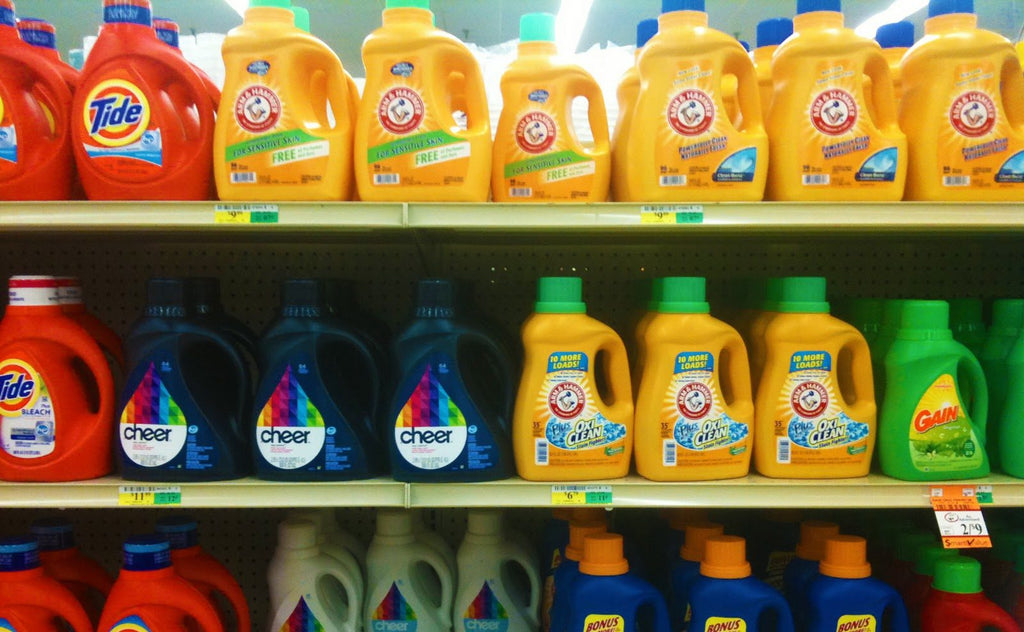
How to avoid 1,4 Dioxane
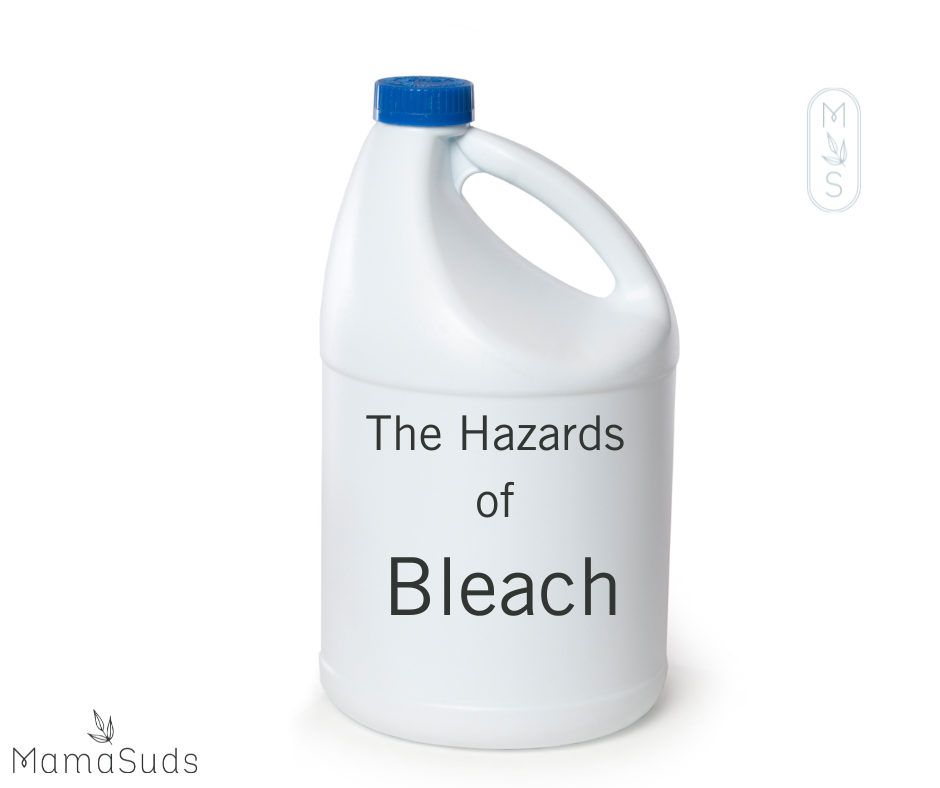
The Hazards of Bleach
Hello, My name is Michelle C. Smith and I am formally addicted to bleach. I used it in my laundry and I used on every one of my hard surfaces. I was convinced it kept my family healthy. From the research I have done on germs (partly to help my germaphobia), I have learned germs help our autoimmune system become stronger. I have also read so much about the horrible impact bleach and its manufacturing process has on our environment.
Dioxins- have you ever heard of them? They are one of the most toxic chemicals known to our planet.
Without giving you a boring chemistry lesson... "Dioxins are a group of chemically-related compounds that are persistent environmental pollutants" and they are a by-product of the manufacturing of bleach. Do dioxins cause cancer. YES. According to the Environmental Protection Agency, dioxins are a "multigrain carcinogen in animals. Target organs include the liver, thyroid, lung, skin, and soft tissues." That sounds scary. And it is, because dioxins are found in our food. More than 90% of human exposure is through food. It's mostly found in our meat. dairy, fish and shellfish.

Ditch Bleach!
Bleach is caustic and corrosive. But the real problem is how it's made. Bleach manufacturers often release the solution in water and other industrial waste. It eventually gets in the water system which harms aquatic life and can mix with other organic compounds and create more harmful toxins.
Bleach is in or contributes to the manufacturing of about 15,000 products. It's a big deal. So let's stop using it.
It's hard to read about ideas and facts that make us question what we thought to be true. When I first started reading about all this information more than 15 years ago, it made me start questioning a lot of what I thought was the truth. It’s hard for some people to question things. It makes you question more things. It has a domino effect. I find that once people learn about the real harmful effects that bleach has on us as people, as a human race, on our ecological system.... they change a lot of other aspects of their lives. It can be frightening. I don't even think that word captures the true feeling, but it's hard to think about how some tiny chemicals can wreak havoc on our environment and nobody seems to be talking about it.
How does this information about bleach and how it affects us make YOU feel?
Need bleach alternatives? Find them here.

The Top 3 Ingredients to Avoid in Laundry Detergent
Toxic chemicals may be hiding in your laundry detergent. Find out what you need to know to stay safe and healthy and get your laundry clean.
Doing the Laundry is the Worst. Okay, so maybe a few people like one aspect of laundry. But most hate it. I like putting my laundry into the washer and starting it. But then that's when I wish the Laundry Fairy would finish the job for me! Who can relate?
Unless you live in a nudist colony, your skin is touching fabric 24/7, so what you use to wash your laundry is important to your health. Conventional laundry detergent (and many greenwashed "natural" ones too!) contains many unhealthy ingredients that can severely impact your health. In fact, your laundry room products are some of the most toxic cleaning chemicals in your house!
With so much to sort through on product labels (if your detergent lists the ingredients on the label at all), it can be hard to sort through the good, the bad and the greenwashed. We have some ingredients to steer clear of when you are looking at a safe and healthy detergent.
1. Fragrance
Fragrances in laundry products can lead to skin irritation (which can be the cause of rashes, eczema, and itching). A big problem with fragrance is that companies can list them as one ingredient without listing all the components. Why does this matter? Most fragrance is synthetic and contains both phthalates and petrochemicals (which is bad for the environment) which do not have to be disclosed. These components can cause headaches, asthma attacks, and skin irritations that don't always show up right away. They build up in our system and cause a gradual overload.
“Fragrance is considered to be a trade secret, so brand formulas are proprietary and the individual ingredients are not required to be listed on the label,” explains Tonya Harris, an award-winning environmental toxin expert and the creator of the Slightly Greener Method. “Fragrances in detergent can be made up of dozens of ingredients, of which some may be allergenic [and] toxic to the brain and nervous or respiratory system.”
Bottom line: stick with essential oils (real ones!) or go unscented, and stay clear of the word FRAGRANCE and PARFUM.
2. Ingredients that end in "-ETH"
Ethoxylated ingredients are treated with ethylene oxide (a known carcinogen) when it's processed. A by-product of this process is 1,4-dioxane (another carcinogen) which is absorbable through the skin. 1,4-dioxane won't be listed as an ingredient on your products so it's important to stay away from ingredients that when processed create 1,4-dioxane as a by-product. Companies use ethoxylated ingredients to stabilize their formula so the ingredients won't separate.
Bottom line: steer clear of ingredients that end in "-eth", polysorbates, phenoxyethanol, and PEGs.
3. Sulfates
We have been conditioned in the last 100 years to believe that soap/detergent must foam or lather in order to clean. Sulfates are found in so many everyday products; everything from shampoo to toothpaste, and laundry detergent. They are a skin irritant that doesn't always show up as an immediate reaction.
Bottom line: avoid sodium laurETH sulfate and sodium lauryl sulfate.
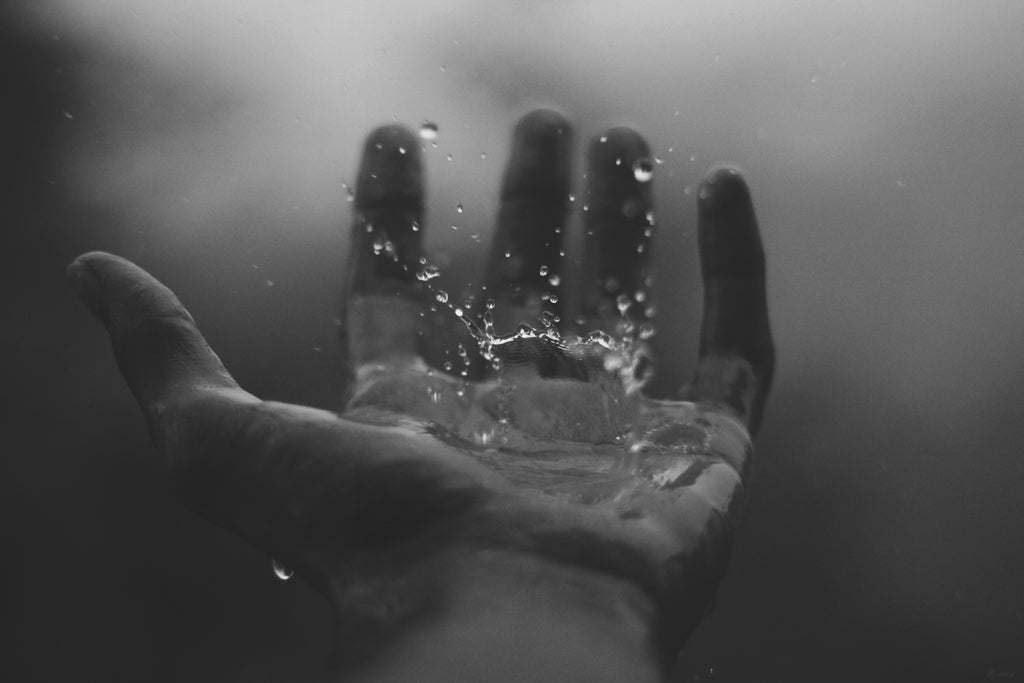
The Dirty Details of Chemical Cleaners
No one wants to keep a dirty home, but regular cleaning using chemical compounds can be dangerous for your health. Cleaning substances are the 3rd most common reason for exposure to poison in adults, and the second most common reason for exposure in children. Everything from dish soaps to fabric softeners can include toxins that pose a risk to you, your family, and the environment. The next time that you go to clean the messiest rooms of your house, it’s a good idea to be aware of the dangers that your cleaning products may pose to your wellbeing.
Skin Damage
Harsh chemical cleaners are known to cause damage to the skin. While mild detergents might just dry skin out and become dehydrated, stronger corrosive and acidic cleansers can lead to severe burns if they come in contact with the skin or eyes. If ingested, these cleaners can also do internal damage to the mouth, throat, and esophagus. Some of the most dangerous cleaners include corrosive drain solutions, oven cleaners, strong bleach mixtures, and acidic toilet bowl cleaners.
Breathing Problems
If you're cleaning a poorly ventilated area, chemical cleaners may produce fumes that can irritate the nose, throat, and lungs. Chlorine bleach and ammonia can both cause breathing difficulties, especially in people with asthma or other chronic lung problems. Combining different cleaners can be particularly dangerous. Adding ammonia to chlorine or lye can produce hazardous chloramine gases while combining chlorine with acids can lead to caustic chlorine gas.
Carcinogenic Agents
While many health issues caused by chemical cleaners are brief and temporary, there can also be long-term consequences. Some cleaners contain compounds that increase your risk of developing cancer. All-purpose cleaners containing diethanolamine (DEA) and triethanolamine (TEA) create carcinogenic nitrosamines when they come in contact with nitrites. 1,4-dioxane and phenols are also commonly found ingredients that are suspected carcinogens.
Environmental Concerns
In addition to impacting your health, chemical cleaners can also affect the environment around you. Some cleaners contain compounds that don’t readily break down during the treatment process, releasing hazardous detergents and disinfectants into the waterways. Not only does this threaten the health of local marine wildlife, but it can also lead to dangerous chemicals and carcinogens showing up in your food. You might begin to see dangerous levels of toxins in local fish populations, or runoff may make its way into the soil and affect crops.
It's important to be careful about what products you bring into your home when dealing with cleaners. You should always read the label to ensure that no ingredients are present that might harm you or your family. Switching to green products such as MamaSuds Household Cleaners can help to keep your dishes, your clothes, and your home free of toxic chemicals.
Contribution by freelance writer Sally Preston
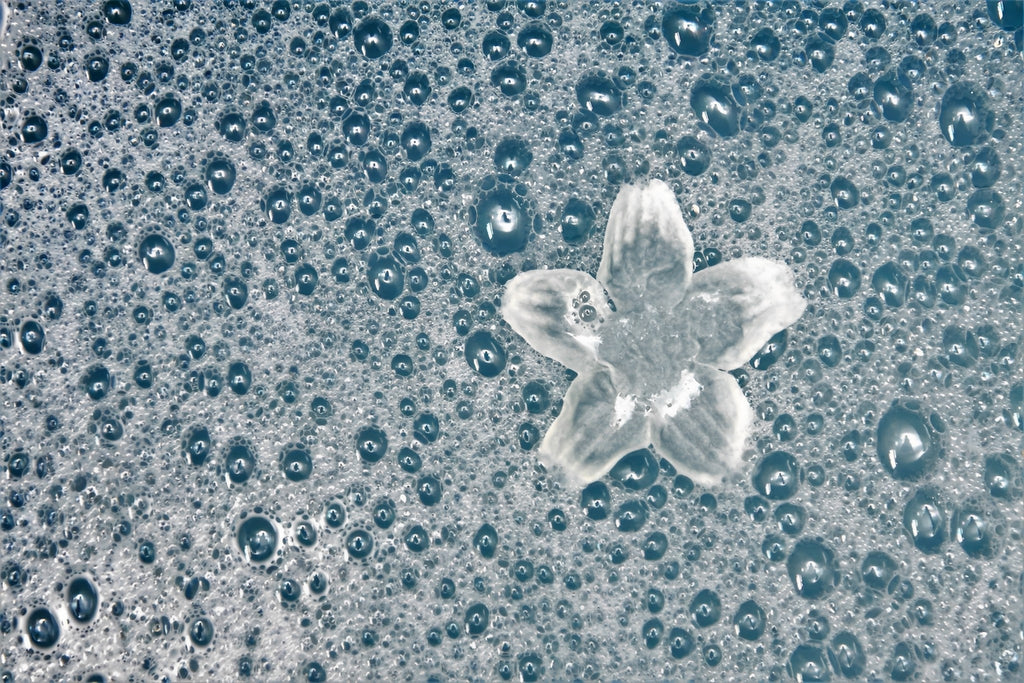
Label Lesson: SLS and SLES
• Sodium Lauryl Sulfate (SLS) and Sodium Laureth Sulfate (SLES), which can have various names, have been rated as a low to moderate hazard by Skin Deep.
• The International Journal of Toxicology recommends using products with concentrations of SLS of 1% or less when used for any length of time, but most cleaning products have levels between 10-30%, or even higher.
• The ILO states that “the substance is toxic to aquatic organisms” and advises not to let it enter the environment.
• Contamination with 1,4-dioxane is also possible, which is a possible human carcinogen and harmful to the environment.
• Alternatives for bubbles include coconut derived products and castor oil, but these are more expensive.


